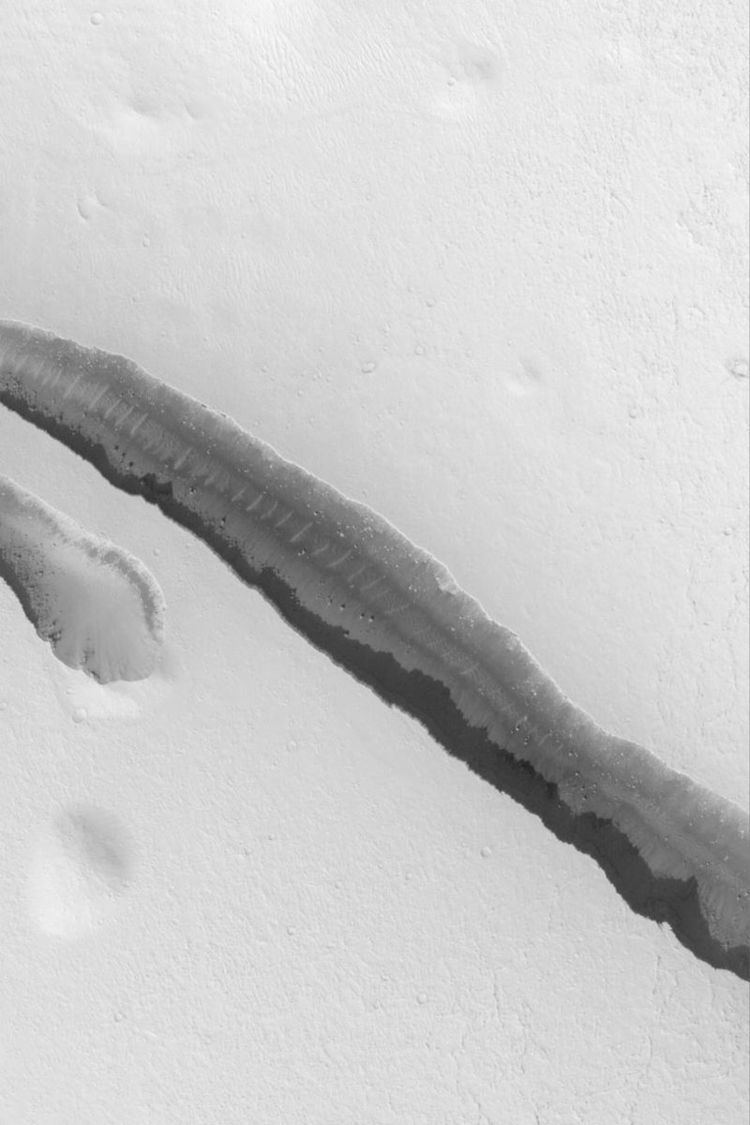Length 1,630.0 km | ||
 | ||
Naming From albedo featureat 10n, 212W. Changedfrom Cerberus Rupes. | ||
The Cerberus Fossae are a series of semi-parallel fissures on Mars formed by faults which pulled the crust apart in the Cerberus region. They are 1235 km across and centered at 11.28 °N and 166.37 °W. Their northernmost latitude is 16.16 °N and their southernmost latitude 6.23 °N. Their easternmost and westernmost longitudes are 174.72 °E and 154.43 °E, respectively. Ripples seen at the bottom of the faults are sand blown by the wind. The underlying cause for the faulting was magma pressure related to the formation of the Elysium volcanic field, located to the northwest. The faults pass through pre-existing features such as hills, indicating that it is a younger feature. The formation of the fossae is suspected to have released pressurized underground water, previously confined by the cryosphere, with flow rates up to 2 × 106 m3s−1, leading to the creation of the Athabasca Valles. Marte Vallis is another channel that was formed from water released from Cerberus Fossae.
A 2005 photo of a locale within Elysium Planitia at 5° N, 150° E by the Mars Express spacecraft shows what may be ash-covered water ice. The volume of ice is estimated to be 800 km (500 mi) by 900 km (560 mi) in size and 45 m (148 ft) deep, similar in size and depth to the North Sea. The ice is thought to be the remains of water floods from the Cerberus Fossae fissures about 2 to 10 million years ago. The surface of the area is broken into 'plates' like broken ice floating on a lake. Impact crater counts show that the plates are up to 1 million years older than the gap material, showing that the area solidified much too slowly for the material to be basaltic lava.
However, early radar analysis suggests there's no evidence of 'pack ice' tens of meters thick as hypothesized based on the images from Mars Express of the area. This is in support of the US view of images of the area, based on impact crater morphology which do not show any evidences of meteorite hitting anything but solid stone lava fields Other researchers have found evidence of past ice in the area; they believe that lava flows may not have been involved.
